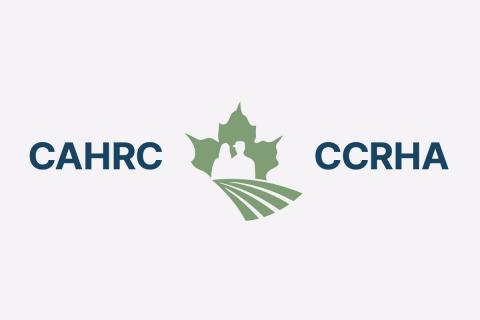It’s no secret that the agriculture industry struggles to find enough workers. But did you know that the Canadian Agricultural Human Resource Council (CAHRC) offers a wage subsidy for agriculture employers to hire students?
CAHRC has been studying labour gaps in the agriculture industry for many years to determine where possible solutions might lie. A not-for-profit organization focused on addressing workforce and human resource issues facing agriculture-based businesses across Canada, CAHRC conducts labour market research, analyses skills gaps and develops HR tools and resources for employers.
The Student Wage Placement Program (SWPP) is just one of CAHRC’S many helpful solutions.
Many post-secondary programs have a practical component, called Work Integrated Learning (WIL), as one the requirements that students must fulfill. With this in mind, CARHC established a wage subsidy as part of their Growing Opportunities initiative in 2021. The goal is to help employers take advantage of student labour and provide students more opportunities to fulfil the practicum portion of their education. It’s a win-win that supports businesses struggling to find skilled workers and builds the workforce at the same time.
So how exactly is SWPP helping build a workforce for the agriculture industry? Here’s 9 ways:
1. Employers receive a wage subsidy to help with costs of hiring. This amount is 50% of the wages (to a maximum of $5,000) for each net new placement. Employers who hire students from under-represented groups (including women in science, technology, engineering and math; Indigenous students; newcomers; persons with disabilities; visible minorities; and first-year students) can receive up to 70% of the wages (to a maximum of $7,000) for each net new placement.*
2. It reduces employers’ risk. Since 50-70% of the wage is paid through the subsidy, it’s a lot less risky to bring on one or more untested workers.
3. Companies have more opportunities to access talent with the skills they need. CAHRC and post-secondary institutions work with employers to find the candidates with the skillsets they need, which also means less time and energy is required for hiring and training.
4. A wide range of businesses and jobs are eligible. The wage subsidy applies to industries from primary production, to aquaculture and non-profit organizations, and across the spectrum of roles and responsibilities. Employers must be willing to hire students from both ag and non-ag backgrounds, be committed to their success and have the financial capacity to pay the student throughout their placement.
5. It’s flexible. Employers are able to apply for the number of students they need, whether that’s 2, 5 or 20. And businesses can apply for the wage subsidy program more than once; in fact, it’s possible to apply year-round. There are three placement terms: summer, fall and winter.
6. CAHRC makes it easy. The application process, done online, has been streamlined to make it as easy as possible for employers to apply, taking only 20-30 minutes for each student. Employers are notified within 14 days as to whether they are eligible. And once a placement is complete, employers are usually paid within a month of their documents being submitted.
7. Employers get to vet potential new employees. This program allows employers to work with students on a trial basis to evaluate their work and find out if they are suitable as future employees – or if they’re even cut out to be supervisors or managers.
8. The program is helping finding employees to replace ones who retire. With a large number of Baby Boomers now retiring, the future of the industry depends on bringing the next generation into the field. As a result, it is helping the agriculture industry find a reliable source of labour to continue to produce food products.
9. It’s drawing from a new pool of employees by allowing business to access people who may not have considered agriculture as a career. Students are able to work with an Ag-related company and learn first-hand about agriculture and the opportunities for employment.
Creating a sustainable supply of labour is the only way forward for the agriculture industry, and engaging young Canadians is part of the solution. Initiatives like Growing Opportunities help employers maintain a viable workforce, attract new talent to the agriculture field, and build understanding and awareness of potential Ag careers. Through the efforts of CAHRC and the support of their partners, huge strides are being made to ensure a healthy future for agriculture across Canada.
For more information on the Growing Opportunities wage subsidy, contact Megan Lockh mlockart@cahrc-ccrha.ca
*“Net New” refers to the number of new placements in your operation since first accessing the SWPP funding. For example, if an employer hired two students last year and received SWPP employers, employers would need to determine how many students they were hiring before accessing SWPP funding. So, before SWPP funding if they were hiring only one student, then they will be eligible to hire 2 or more students every year.
